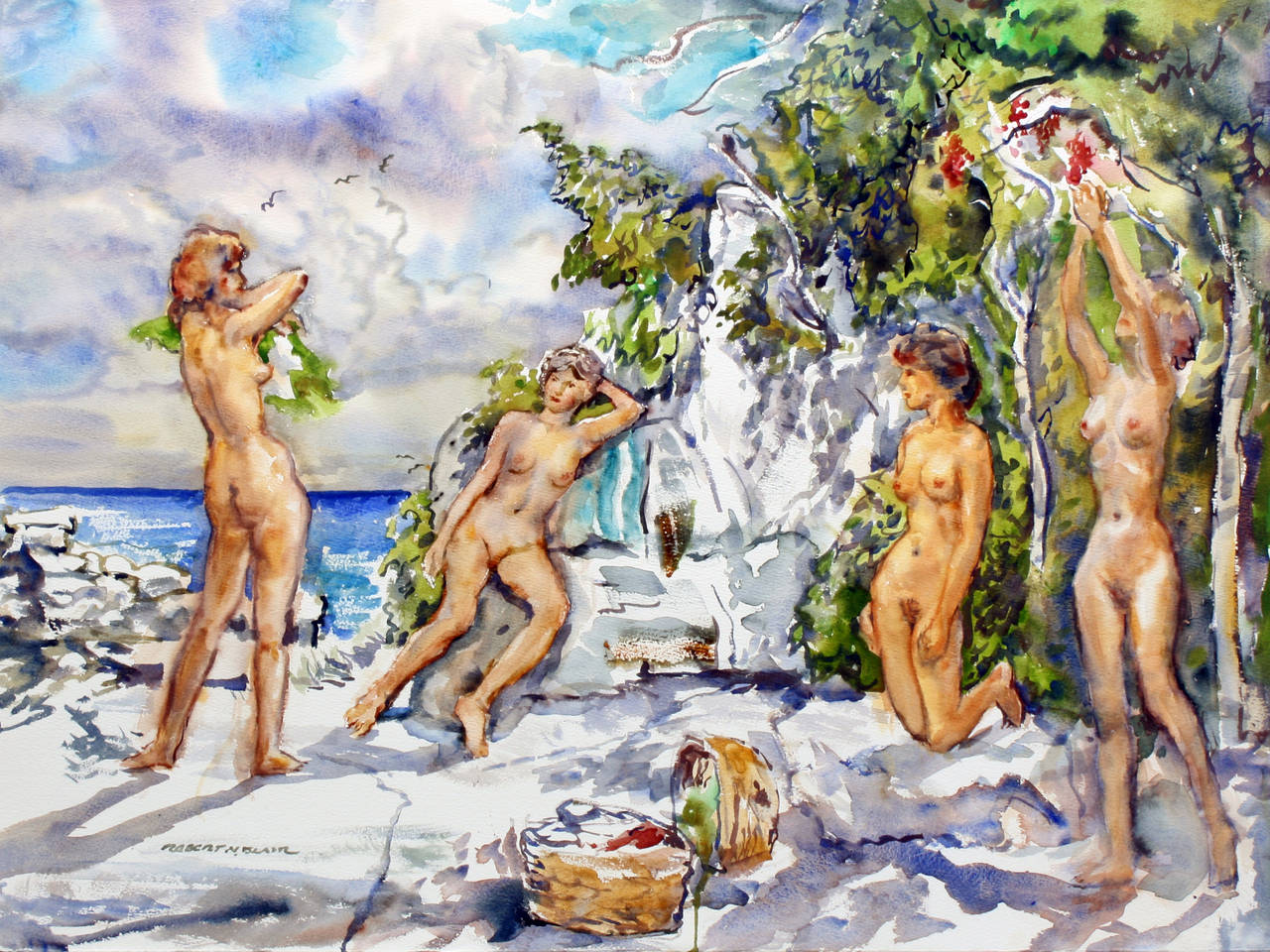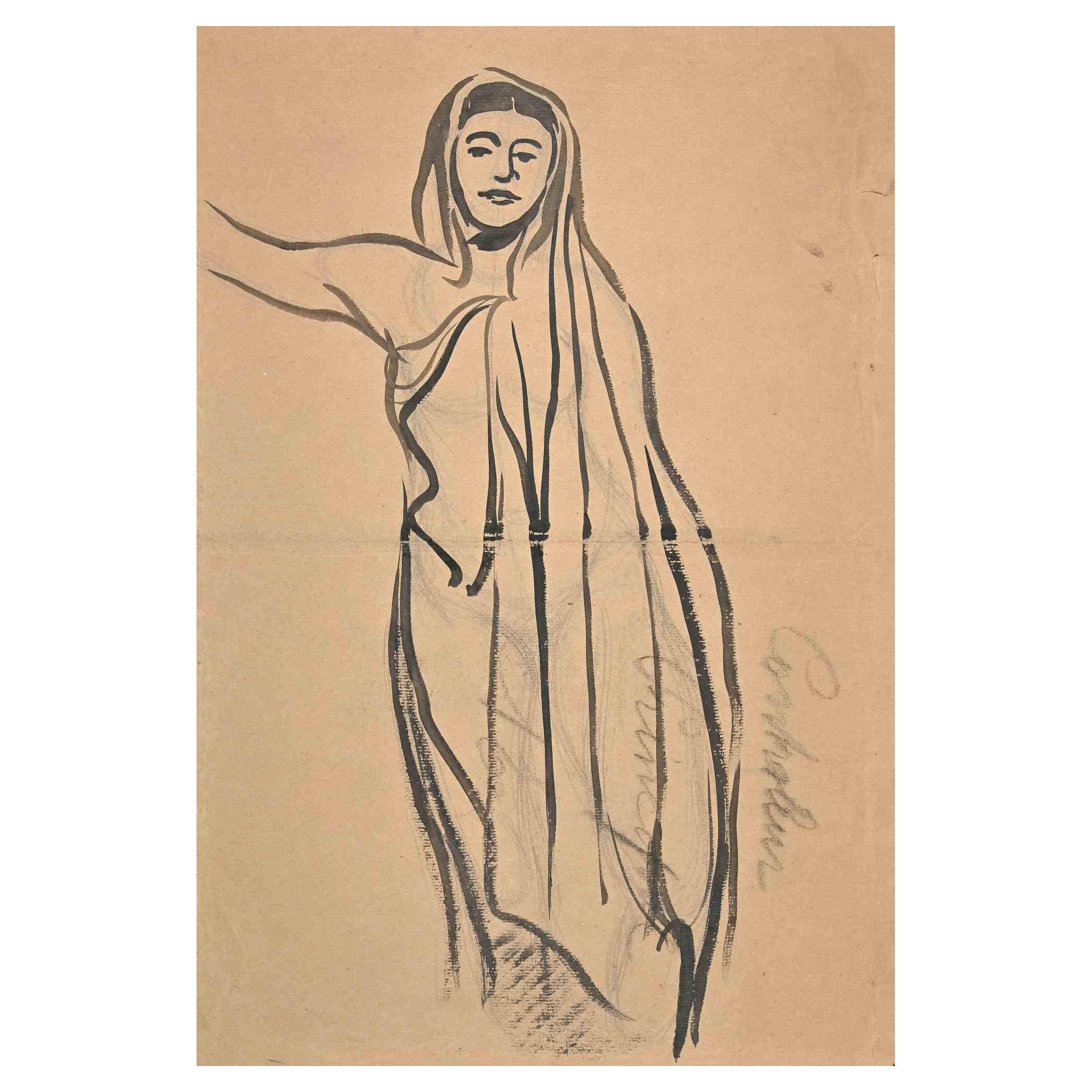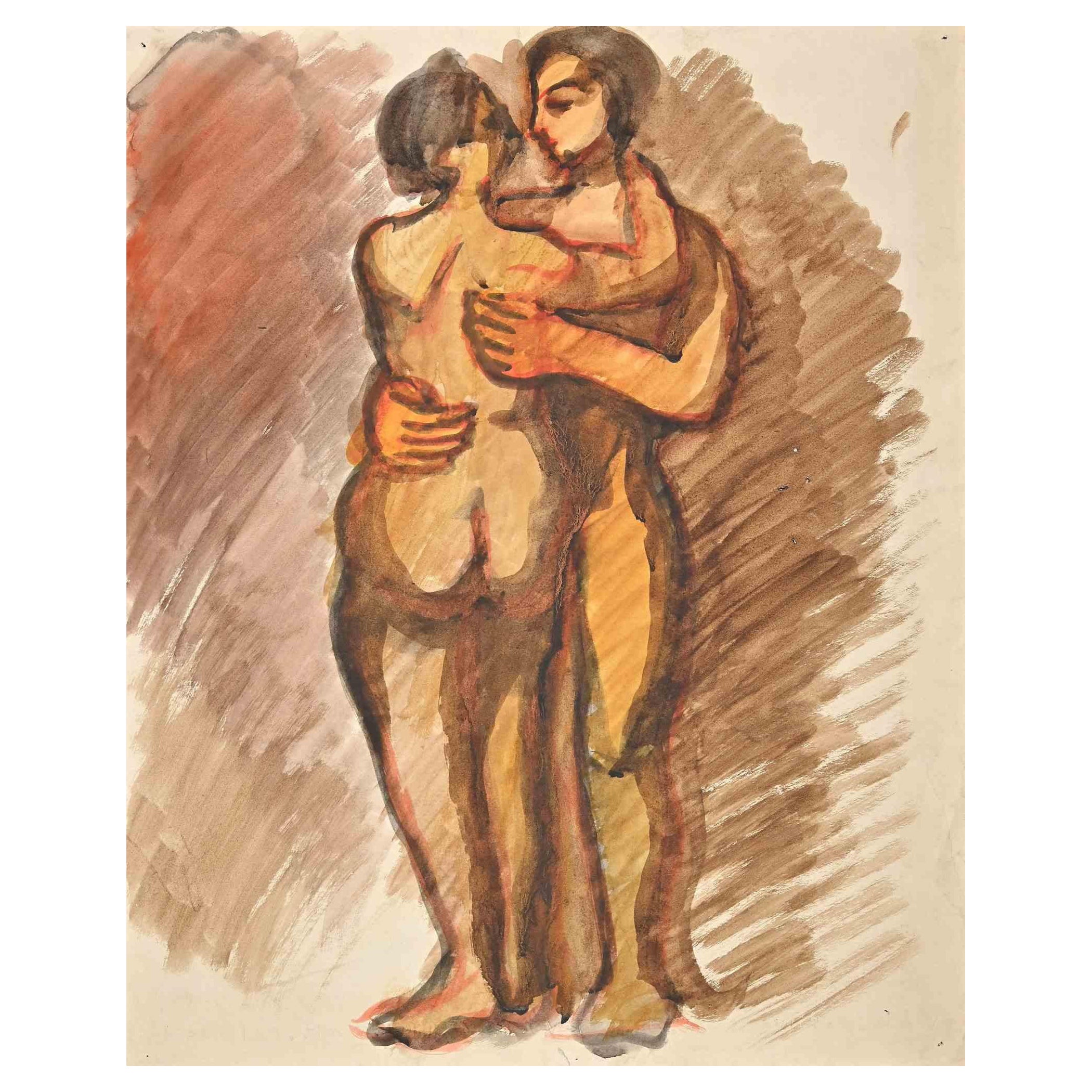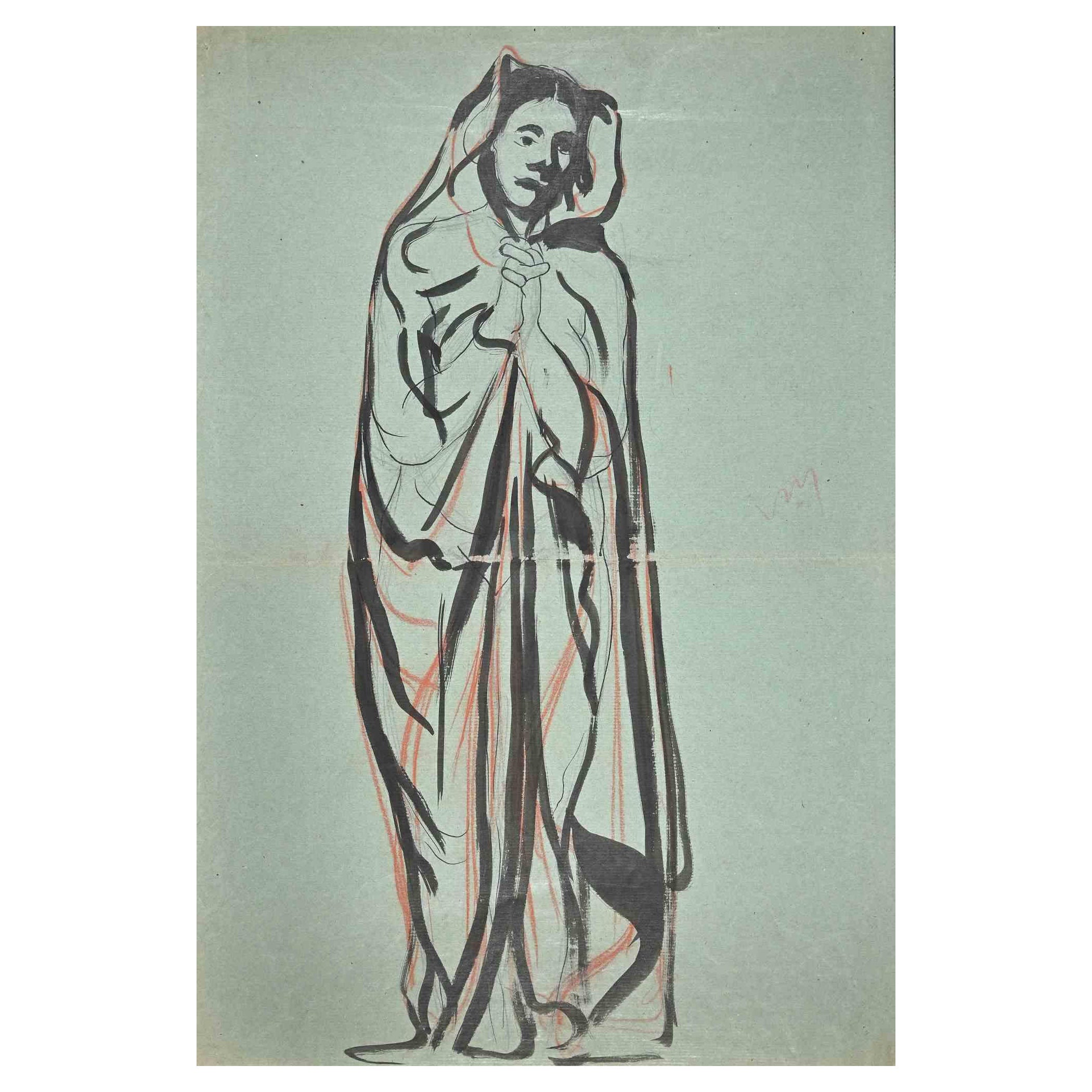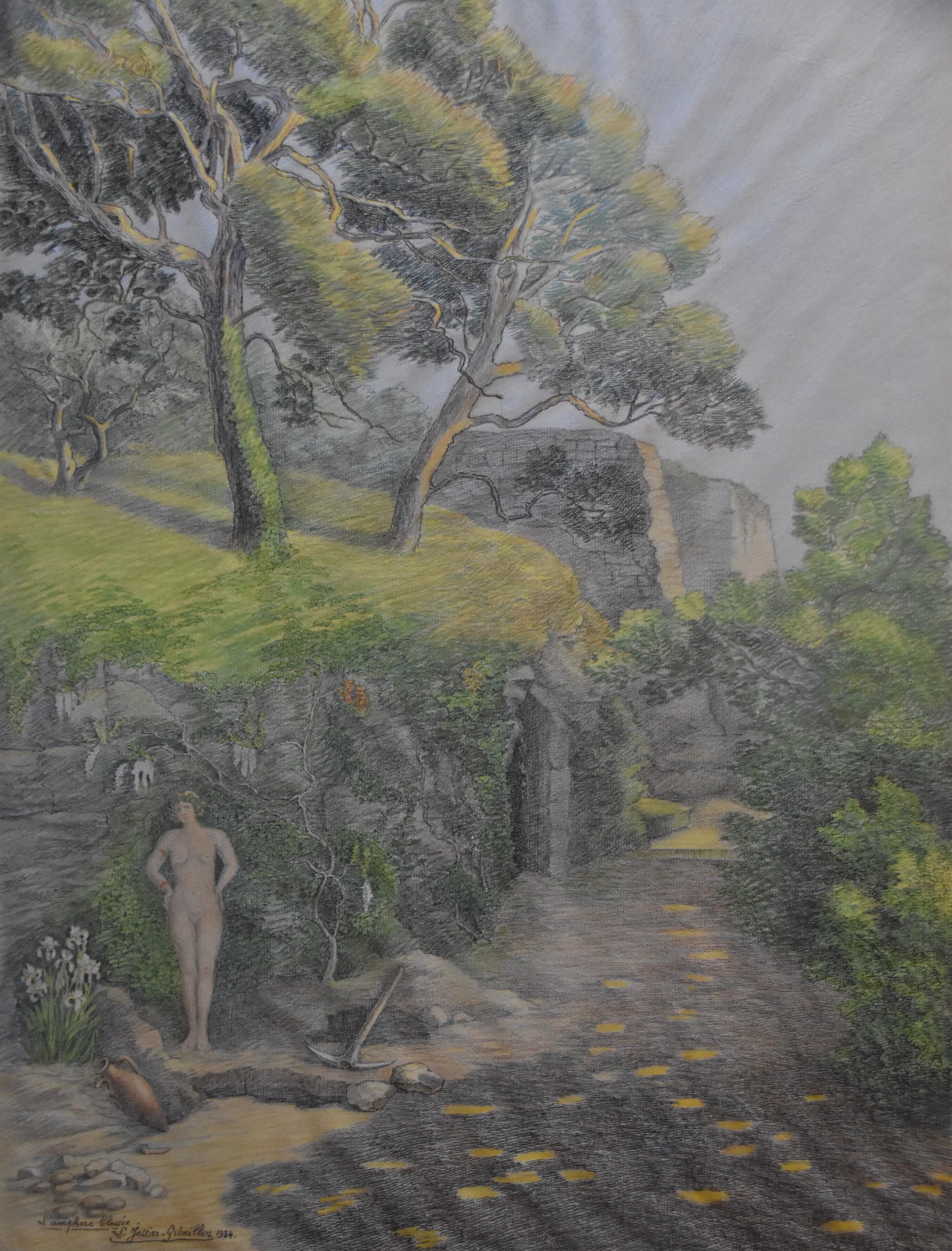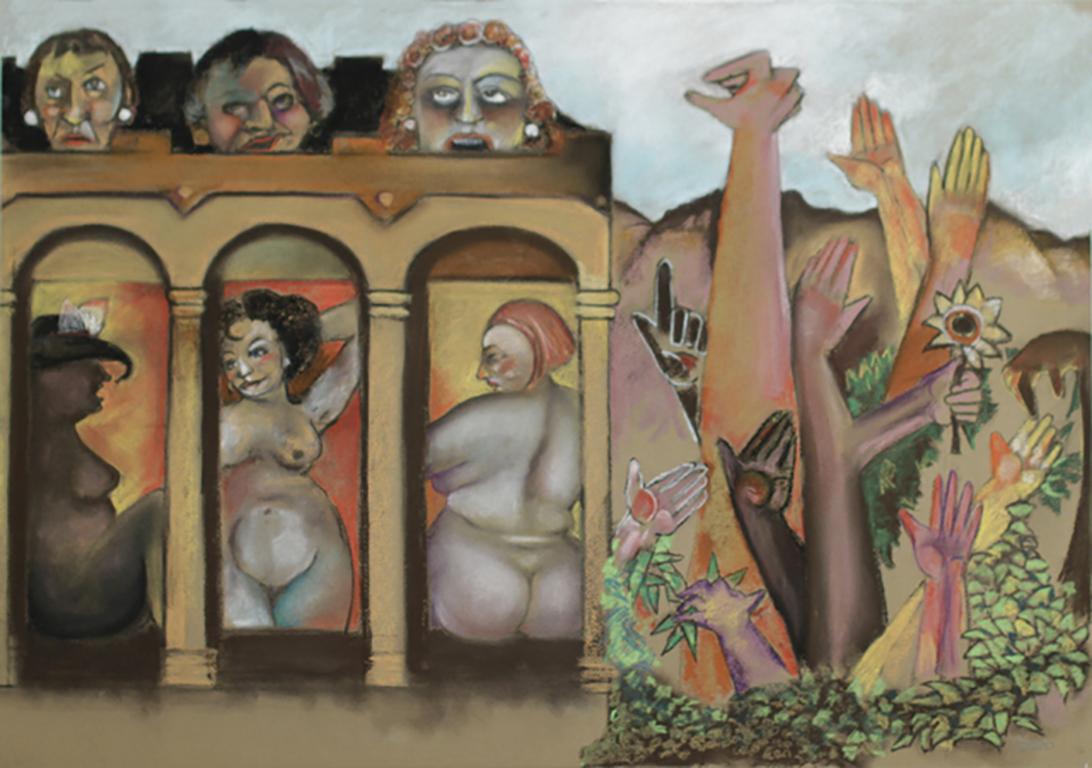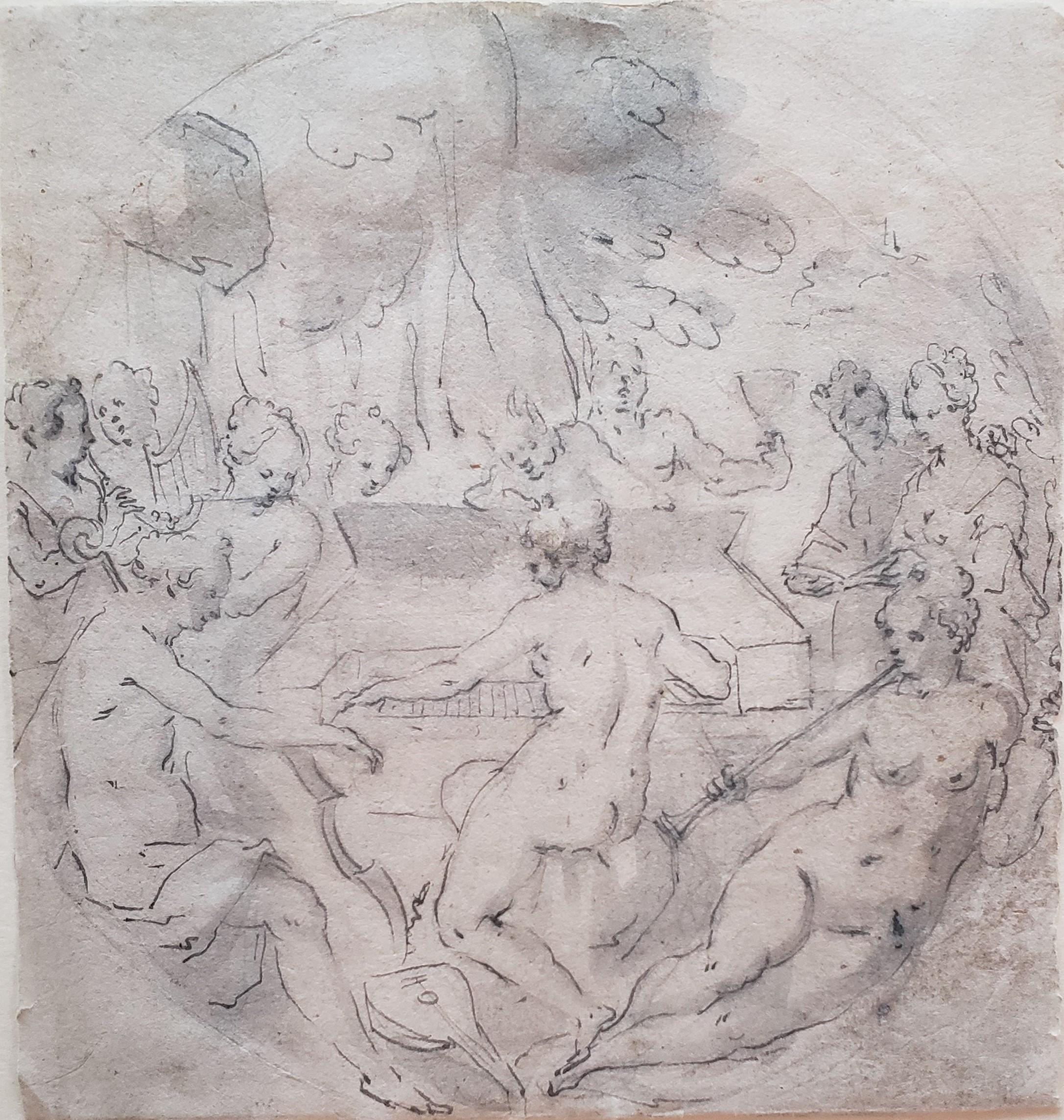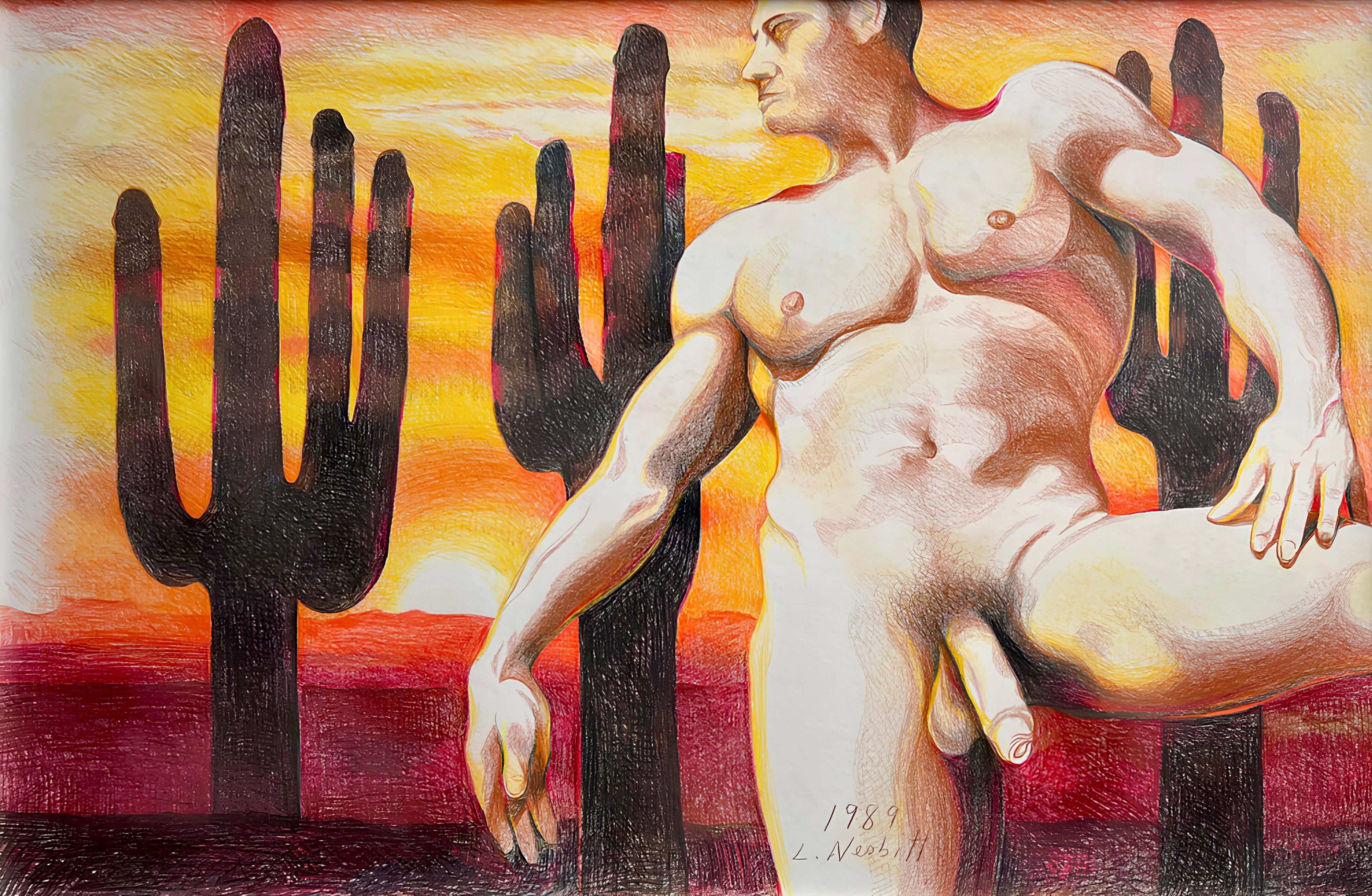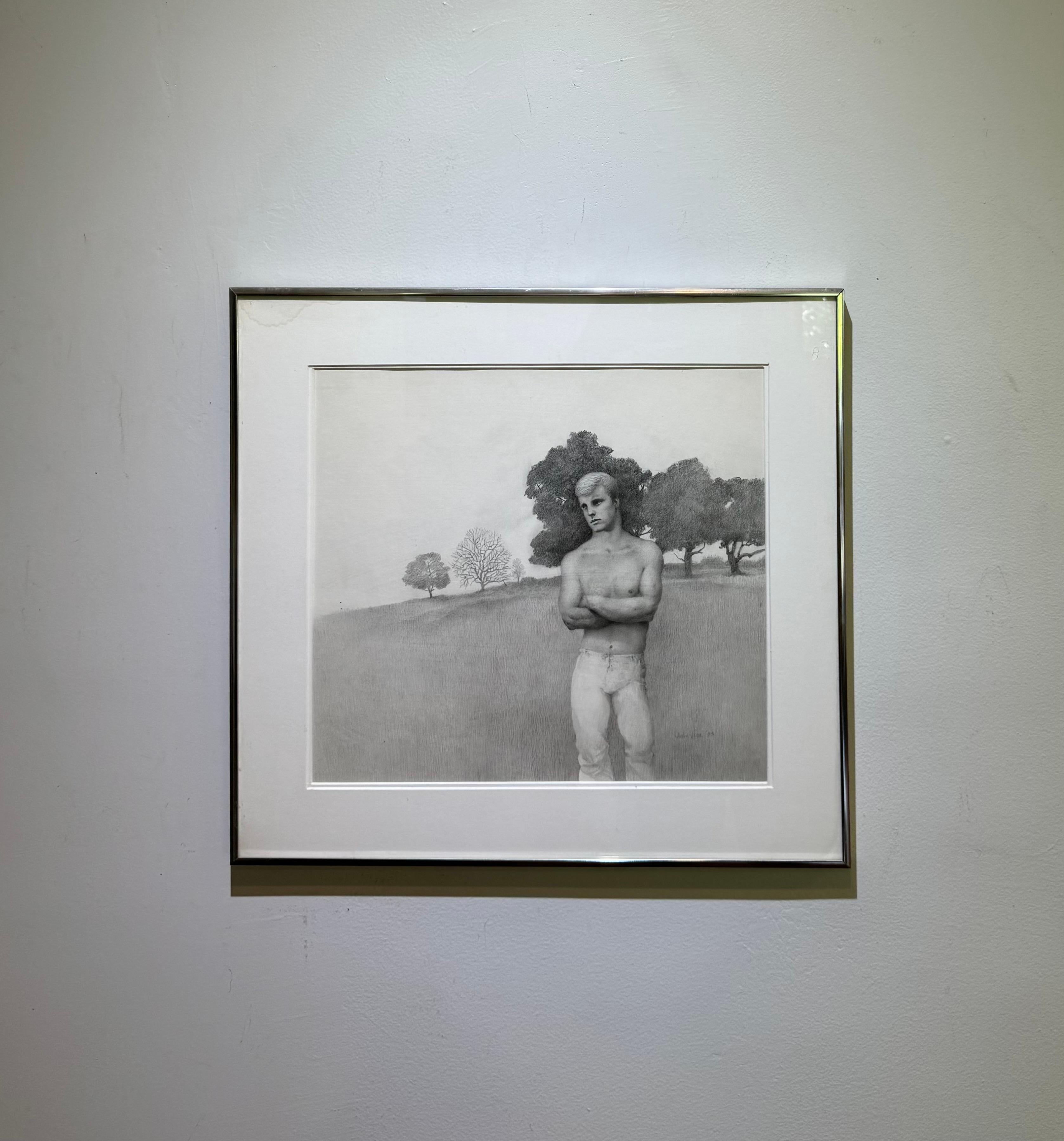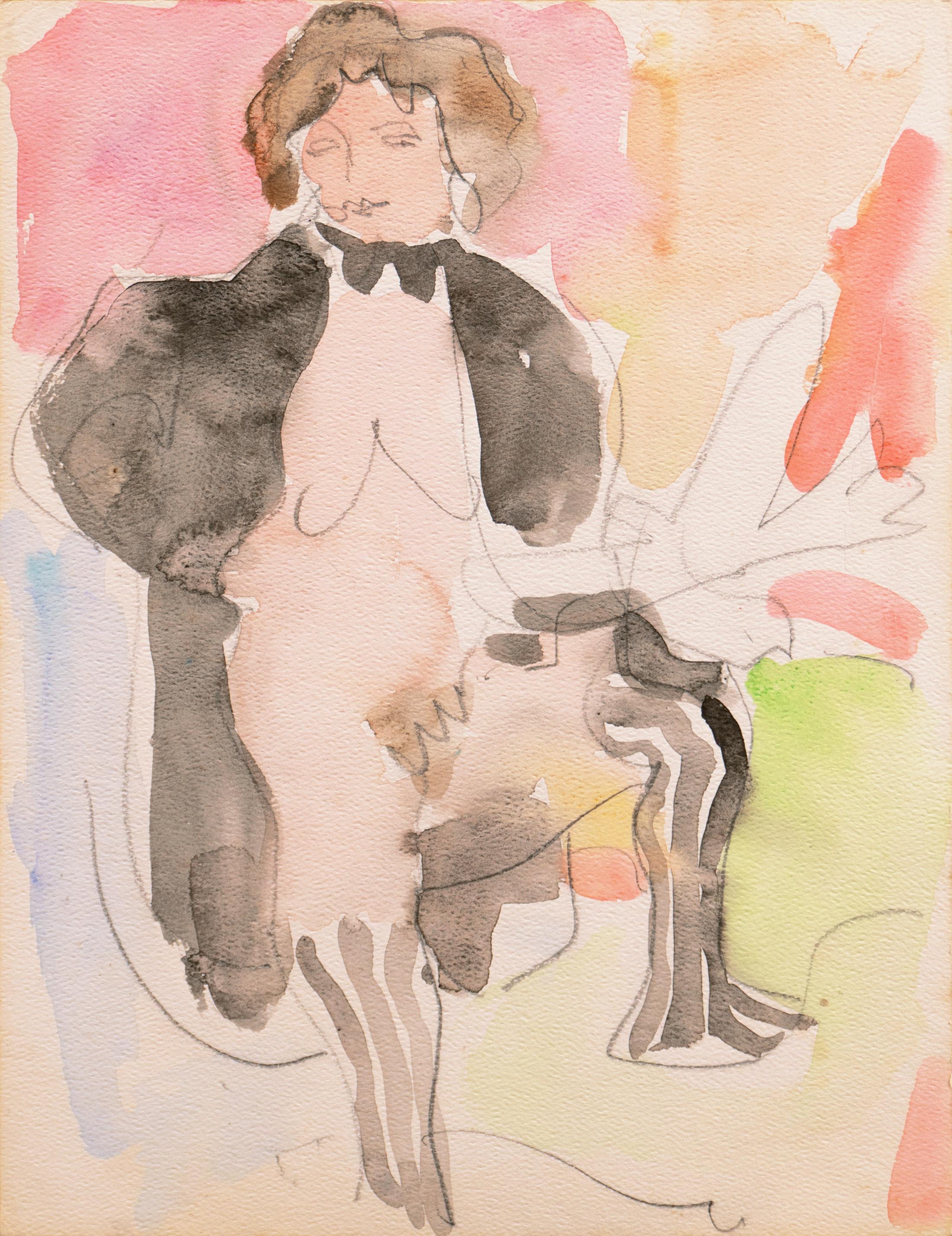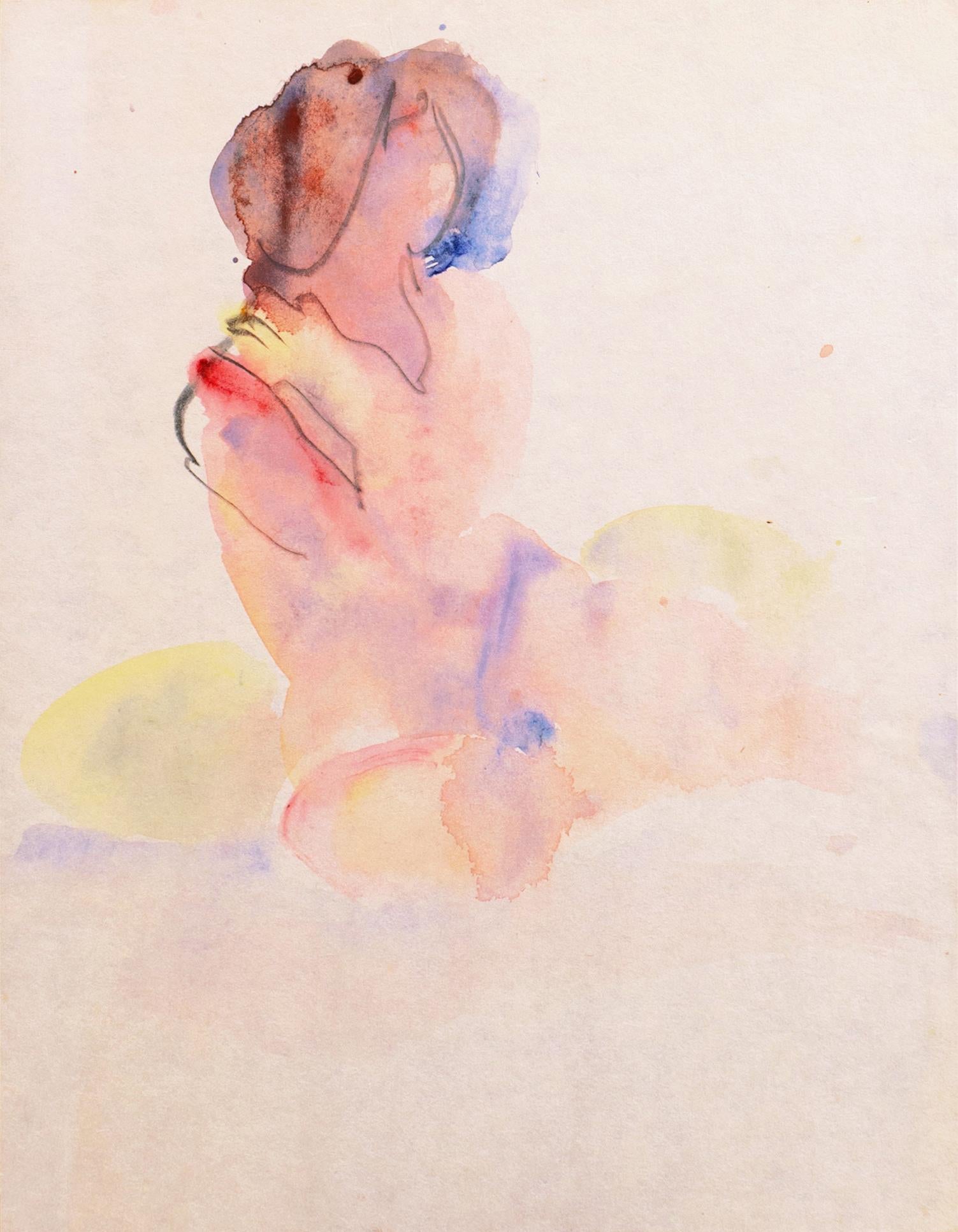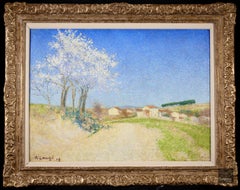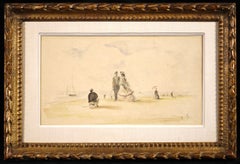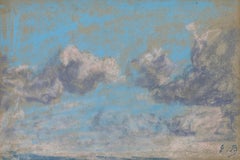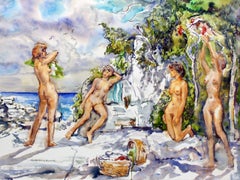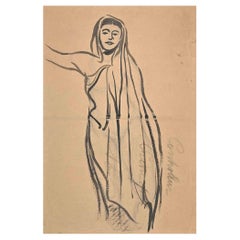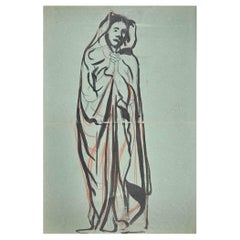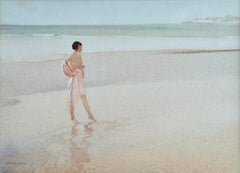
Clarissa Impatient - Watercolor, Nude Figure in Coastal Landscape by W R Flint
View Similar Items
Want more images or videos?
Request additional images or videos from the seller
1 of 8
William Russell FlintClarissa Impatient - Watercolor, Nude Figure in Coastal Landscape by W R Flint1936
1936
About the Item
- Creator:William Russell Flint (1880 - 1969, Scottish)
- Creation Year:1936
- Dimensions:Height: 9.5 in (24.13 cm)Width: 13 in (33.02 cm)
- Medium:
- Movement & Style:
- Period:
- Condition:Excellent condition.
- Gallery Location:Marlow, GB
- Reference Number:Seller: LFA01871stDibs: LU41535292872
About the Seller
5.0
Platinum Seller
Premium sellers with a 4.7+ rating and 24-hour response times
Established in 2001
1stDibs seller since 2016
703 sales on 1stDibs
Typical response time: 1 hour
Authenticity Guarantee
In the unlikely event there’s an issue with an item’s authenticity, contact us within 1 year for a full refund. DetailsMoney-Back Guarantee
If your item is not as described, is damaged in transit, or does not arrive, contact us within 7 days for a full refund. Details24-Hour Cancellation
You have a 24-hour grace period in which to reconsider your purchase, with no questions asked.Vetted Professional Sellers
Our world-class sellers must adhere to strict standards for service and quality, maintaining the integrity of our listings.Price-Match Guarantee
If you find that a seller listed the same item for a lower price elsewhere, we’ll match it.Trusted Global Delivery
Our best-in-class carrier network provides specialized shipping options worldwide, including custom delivery.More From This Seller
View AllBelveze du Razes - Neo-Impressionist Pointillist Oil, Landscape by Achille Lauge
By Achille Laugé
Located in Marlow, Buckinghamshire
Stunning pointillist landscape oil on panel by French neo-impressionist painter Achille Lauge. The work depicts a path leading to the small village of Belveze du Razes in the South of France on a bright spring day. To the left are white blossom trees in bloom and the houses of the village can be seen in the distance.
Signature:
Signed and dated 1909 lower left
Dimensions:
Framed: 28"x36"
Unframed: 21"x29"
Provenance:
We kindly thank Mme. Nicole Tamburini for allowing us to state that the work is included in the Catalogue Raisonne of the artist which she is currently preparing.
A certificate of authenticity from Mme. Tamburini is available upon request.
Achille Laugé...
Category
Early 1900s Pointillist Landscape Paintings
Materials
Oil, Canvas
Sur la plage de Deauville - Impressionist Figurative Watercolor by Eugene Boudin
By Eugène Louis Boudin
Located in Marlow, Buckinghamshire
Signed watercolour on paper landscape circa 1865 by French impressionist painter Eugene Boudin. This work depicts an artist painting a portrait of an elegant couple on the beach at D...
Category
1860s Impressionist Figurative Drawings and Watercolors
Materials
Paper, Watercolor
Etude de Ciel - Impressionist Landscape Pastel Study by Eugene Boudin
By Eugène Louis Boudin
Located in Marlow, Buckinghamshire
Signed pastel on grey paper circa 1860 by Eugene Boudin. The piece is a study of clouds in a blue sky.
Signature:
Signed with the cachet of the artist's estate lower right
Dimensio...
Category
1860s Impressionist Landscape Drawings and Watercolors
Materials
Paper, Pastel
Dam at Genetin - Impressionist Oil, Winter Riverscape by Armand Guillaumin
By Jean Baptiste-Armand Guillaumin
Located in Marlow, Buckinghamshire
Signed and dated impressionist landscape oil on canvas by French painter Jean Baptiste Armand Guillaumin. This simply stunning piece de...
Category
Early 1900s Impressionist Landscape Paintings
Materials
Canvas, Oil
Projet de Tissus - Fauvist Flowers Watercolor & Gouache by Raoul Dufy
By Raoul Dufy
Located in Marlow, Buckinghamshire
Botanical watercolour and gouache on paper circa 1920 by French fauvist painter Raoul Dufy. The work depicts flowers in red, blue and green. This work was executed by Dufy as a fabric design.
Dimensions:
Framed: 19.5"x19.5"
Unframed: 12"x12"
Provenance:
Private collection of works by Raoul Dufy for Bianchini Ferier
Bianchini Ferrier Collection - Christie's London - July 2001
SF Fall Show
Raoul Dufy was one of a family of nine children, including five sisters and a younger brother, Jean Dufy, also destined to become a painter. Their father was an accountant in the employ of a major company in Le Havre. The Dufy family was musically gifted: his father was an organist, as was his brother Léon, and his youngest brother Gaston was an accomplished flautist who later worked as a music critic in Paris. Raoul Dufy's studies were interrupted at the age of 14, when he had to contribute to the family income. He took a job with an importer of Brazilian coffee, but still found time from 1892 to attend evening courses in drawing and composition at the local college of fine arts under Charles Marie Lhullier, former teacher of Othon Friesz and Georges Braque. He spent his free time in museums, admiring the paintings of Eugène Boudin in Le Havre and The Justice of Trajan in Rouen. A municipal scholarship enabled him to leave for Paris in 1900, where he lodged initially with Othon Friesz. He was accepted by the École des Beaux-Arts, where he studied under Léon Bonnat, whose innate conservatism prompted Dufy to remark later that it was 'good to be at the Beaux-Arts providing one knew one could leave'.
And leave he did, four years later, embarking with friends and fellow students on the rounds of the major Paris galleries - Ambroise Vollard, Durand-Ruel, Eugène Blot and Berheim-Jeune. For Dufy and his contemporaries, Impressionism represented a rejection of sterile academism in favour of the open-air canvases of Manet, the light and bright colours of the Impressionists, and, beyond them, the daringly innovative work of Gauguin and Van Gogh, Seurat, Cézanne, Toulouse-Lautrec and others. Dufy was an out-and-out individualist, however, and was not tempted to imitate any of these artists. He produced, between 1935 and 1937, Fée Electricité (Spirit of Electricity), the emblem for the French utilities company Electricité de France (EDF).
Dufy visited the USA for the first time in 1937, as a member of the Carnegie Prize jury. In 1940, the outbreak of war (and his increasingly rheumatic condition) persuaded him to settle in Nice. When he eventually returned to Paris 10 years later, his rheumatism had become so debilitating that he immediately left for Boston to follow a course of pioneering anti-cortisone treatment. He continued working, however, spending time first in Harvard and then in New York City before moving to the drier climate of Tucson, Arizona. The cortisone treatment was by and large unsuccessful, although he did recover the use of his fingers. He returned to Paris in 1951 and decided to settle in Forcalquier, where the climate was more clement. Within a short time, however, he was wheelchair-bound. He died in Forcalquier in March 1953 and was buried in Cimiez.
Between 1895 and 1898, Raoul Dufy painted watercolours of landscapes near his native Le Havre and around Honfleur and Falaise. By the turn of the century, however, he was already painting certain subjects that were to become hallmarks of his work - flag-decked Parisian cityscapes, Normandy beaches teeming with visitors, regattas and the like, including one of his better-known early works, Landing Stage at Ste-Adresse. By 1905-1906 Friesz, Braque, Matisse, Derain, Vlaminck, Van Dongen and Rouault were described collectively as Fauves (the wild beasts). What they had in common was a desire to innovate, but they felt constrained nonetheless to meet formally to set out the guiding principles of what promised to be a new 'movement'. Dufy quickly established that those principles were acceptable; moreover, he was most impressed by one particular painting by Henri Matisse ( Luxury, Calm and Voluptuousness) which, to Dufy, embodied both novelty and a sense of artistic freedom. Dufy promptly aligned himself with the Fauves. Together with Albert Marquet in particular, he spent his time travelling the Normandy coast and painting views similar...
Category
1920s Fauvist Still-life Drawings and Watercolors
Materials
Paper, Watercolor, Gouache
Fleurs et Papillons - Fauvist Flowers Watercolor & Gouache by Raoul Dufy
By Raoul Dufy
Located in Marlow, Buckinghamshire
Botanical watercolour and gouache on paper circa 1920 by French fauvist painter Raoul Dufy. The work depicts flowers in red and butterflies in blues, yellows, black and white. This work was executed by Dufy as a fabric design.
Dimensions:
Framed: 17"x27"
Unframed: 10"x20"
Provenance:
Private collection of works by Raoul Dufy for Bianchini Ferier
Bianchini Ferrier Collection - Christie's London - July 2001
SF Fall Show
Raoul Dufy was one of a family of nine children, including five sisters and a younger brother, Jean Dufy, also destined to become a painter. Their father was an accountant in the employ of a major company in Le Havre. The Dufy family was musically gifted: his father was an organist, as was his brother Léon, and his youngest brother Gaston was an accomplished flautist who later worked as a music critic in Paris. Raoul Dufy's studies were interrupted at the age of 14, when he had to contribute to the family income. He took a job with an importer of Brazilian coffee, but still found time from 1892 to attend evening courses in drawing and composition at the local college of fine arts under Charles Marie Lhullier, former teacher of Othon Friesz and Georges Braque. He spent his free time in museums, admiring the paintings of Eugène Boudin in Le Havre and The Justice of Trajan in Rouen. A municipal scholarship enabled him to leave for Paris in 1900, where he lodged initially with Othon Friesz. He was accepted by the École des Beaux-Arts, where he studied under Léon Bonnat, whose innate conservatism prompted Dufy to remark later that it was 'good to be at the Beaux-Arts providing one knew one could leave'.
And leave he did, four years later, embarking with friends and fellow students on the rounds of the major Paris galleries - Ambroise Vollard, Durand-Ruel, Eugène Blot and Berheim-Jeune. For Dufy and his contemporaries, Impressionism represented a rejection of sterile academism in favour of the open-air canvases of Manet, the light and bright colours of the Impressionists, and, beyond them, the daringly innovative work of Gauguin and Van Gogh, Seurat, Cézanne, Toulouse-Lautrec and others. Dufy was an out-and-out individualist, however, and was not tempted to imitate any of these artists. He produced, between 1935 and 1937, Fée Electricité (Spirit of Electricity), the emblem for the French utilities company Electricité de France (EDF).
Dufy visited the USA for the first time in 1937, as a member of the Carnegie Prize jury. In 1940, the outbreak of war (and his increasingly rheumatic condition) persuaded him to settle in Nice. When he eventually returned to Paris 10 years later, his rheumatism had become so debilitating that he immediately left for Boston to follow a course of pioneering anti-cortisone treatment. He continued working, however, spending time first in Harvard and then in New York City before moving to the drier climate of Tucson, Arizona. The cortisone treatment was by and large unsuccessful, although he did recover the use of his fingers. He returned to Paris in 1951 and decided to settle in Forcalquier, where the climate was more clement. Within a short time, however, he was wheelchair-bound. He died in Forcalquier in March 1953 and was buried in Cimiez.
Between 1895 and 1898, Raoul Dufy painted watercolours of landscapes near his native Le Havre and around Honfleur and Falaise. By the turn of the century, however, he was already painting certain subjects that were to become hallmarks of his work - flag-decked Parisian cityscapes, Normandy beaches teeming with visitors, regattas and the like, including one of his better-known early works, Landing Stage at Ste-Adresse. By 1905-1906 Friesz, Braque, Matisse, Derain, Vlaminck, Van Dongen and Rouault were described collectively as Fauves (the wild beasts). What they had in common was a desire to innovate, but they felt constrained nonetheless to meet formally to set out the guiding principles of what promised to be a new 'movement'. Dufy quickly established that those principles were acceptable; moreover, he was most impressed by one particular painting by Henri Matisse ( Luxury, Calm and Voluptuousness) which, to Dufy, embodied both novelty and a sense of artistic freedom. Dufy promptly aligned himself with the Fauves. Together with Albert Marquet in particular, he spent his time travelling the Normandy coast and painting views similar...
Category
1920s Fauvist Still-life Drawings and Watercolors
Materials
Paper, Watercolor, Gouache
You May Also Like
Nude Picnic Virgin Islands
By Robert Noel Blair
Located in Buffalo, NY
Robert Noel Blair (American, 1912-2003) was an American artist, painter, sculptor, printmaker and teacher. He is best known for his rural life & desert landscapes and World War II sc...
Category
1960s American Modern Nude Drawings and Watercolors
Materials
Archival Paper, Watercolor
Woman - Original Watercolour by Jean Delpech - Mid 20th century
By Jean Delpech
Located in Roma, IT
Woman is an original drawing in watercolor, realized in the Mid-20th Century by Jean Delpech (1916-1988).
Good conditions.
Jean-Raymond Delpech (1988-1916) is a French painter,...
Category
Mid-20th Century Modern Landscape Drawings and Watercolors
Materials
Watercolor
Couple - Original Watercolour by Jean Delpech - Mid 20th century
By Jean Delpech
Located in Roma, IT
Couple is an original drawing in watercolor, realized in the Mid-20th Century by Jean Delpech (1916-1988).
Good conditions.
Jean-Raymond Delpech (1988-1916) is a French painte...
Category
Mid-20th Century Modern Landscape Drawings and Watercolors
Materials
Watercolor
Woman - Original Watercolour by Jean Delpech - Mid 20th century
By Jean Delpech
Located in Roma, IT
Woman is an original drawing in watercolor, realized in the Mid-20th Century by Jean Delpech (1916-1988).
Good conditions.
Jean-Raymond Delpech (1988-1916) is a French painter...
Category
Mid-20th Century Modern Landscape Drawings and Watercolors
Materials
Watercolor
Louise Marie Jossier-Grémillon L'amphore blessée, 1934, watercolor signed
Located in Paris, FR
Louise Marie Jossier-Grémillon
L'amphore blessée (the wounded amphora), 1934,
signed, titled and dated lower left
watercolor on paper
62 x 44 cm
In good condition
In its original f...
Category
1930s Symbolist Nude Drawings and Watercolors
Materials
Watercolor
erotica al fresco, narrative architectural fantasy w female nudes
By Stephen Basso
Located in Brooklyn, NY
Pastel on toned paper
Category
2010s Surrealist Nude Drawings and Watercolors
Materials
Paper, Pastel
Recently Viewed
View AllMore Ways To Browse
Judgement Of Paris
Venice Pen And Ink
Paintings Of French And Italian Riviera
Snow Storm Painting
British Knight Canvas Paintings
Impressionist Loch
Canterbury Tales
Societe R W
Vintage Huntress
The Gleaners
Paintings With Reflections
Old Canvas Art
Marching Art
Blue London
French Painting Landscape Oil Painting
Blue Modern Painting
Paintings Of Chicago
French School Foral Painting
